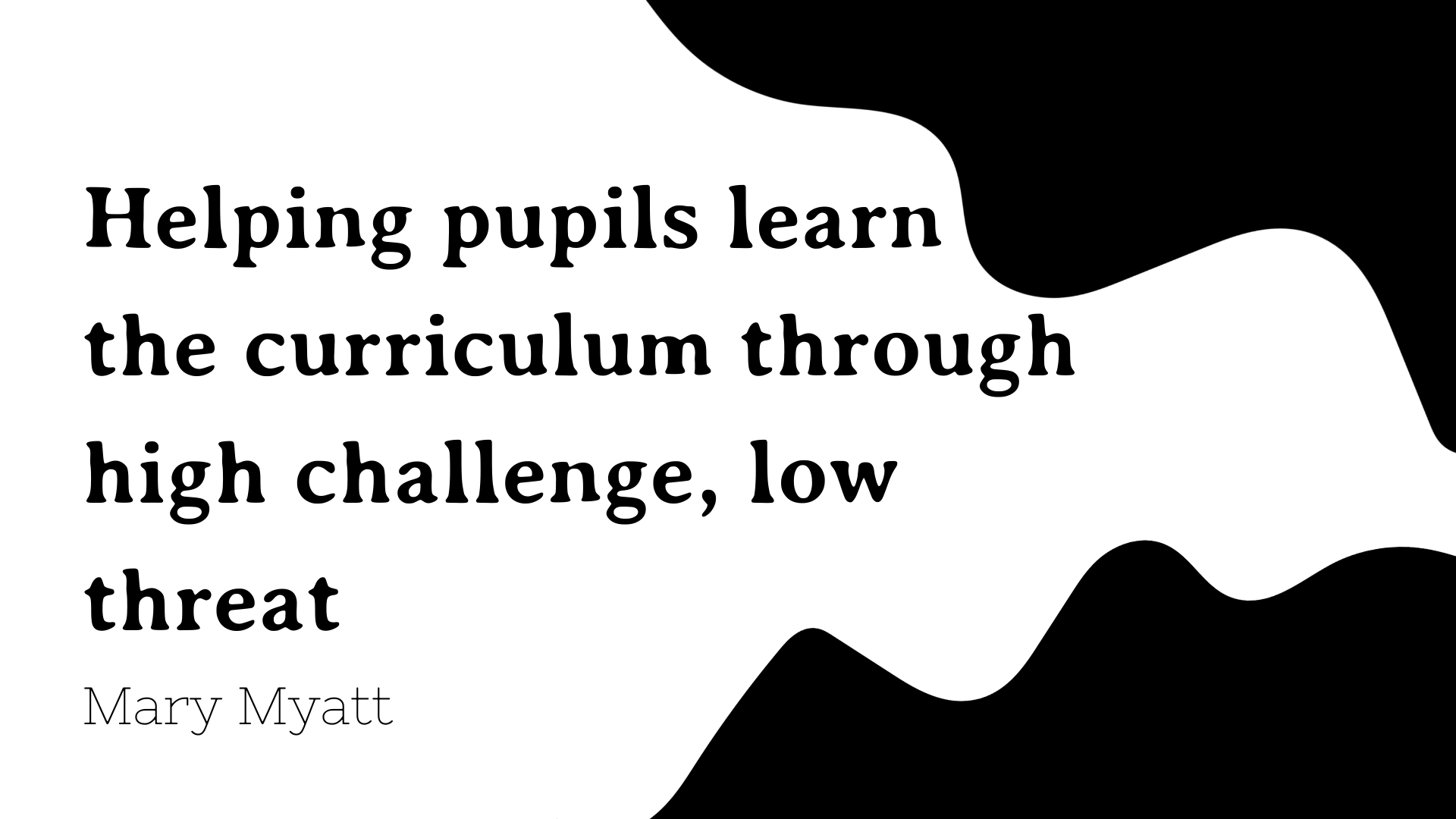The curse of content coverage
‘Vices are sometimes only virtues carried to excess!’
- Charles Dickens
Whether we are in primary or secondary context, there is a lot of stuff to teach and there’s a temptation to think that covering more must mean that pupils learn more and that we do not have sufficient time. It can be daunting as we survey just how much we have to get through. But let’s take a moment to unpack the content to be taught. For key stage 1 2 and 3 the content is set out in the national curriculum documents. Beyond English and maths which specify the content to be taught in each year, for the other national curriculum subjects the material to be taught is across a key stage. In key stage 1 that’s two years, in key stage two that’s four years and in key stage 3 it is three years. To expand this to the amount of time available in key stage 2, if we assume one hour a week (although many schools collapse the timetable to do an in depth project, the time allocation still broadly holds) And that there are 40 available weeks a year, across 4 years that’s 160 lessons. Even with the content in history, which has more than other subjects, that’s a fair chunk of time.
If the first argument is that we have time, although never enough, across a key stage, the second argument is that we cannot teach the next lesson or part of the scheme if our pupils have not grasped what we are currently teaching. The idea that we should move on because it is on a plan, if our pupils are not secure, is basically saying that the plan is more important than the pupils. We would never say this out loud, but if we are rushing on through to cover the content, then that is essentially what we are doing.
We can see how this happens. When there is an accountability focus on questions such as ‘Have you finished this unit yet?’, ‘Have your pupils made ‘progress’?’, ‘What does their progress look like on the spreadsheet?, then the systems within school are putting pressure on the classroom practice to privilege content coverage over learning. It falls into the trap of implying ‘Well they have been taught it, so they should have got it.’
What should we do to avoid the tyranny of content coverage? The first is to identify the concepts and the big ideas within the material to be taught, and to make sure that these are at the forefront of our planning. Why is this helpful in avoiding the curse of content coverage? The temptation is to go straight to the detail of the national curriculum documents when planning. What happens then is that the curriculum can become fragmented and ‘bitty’. It means that it is harder for pupils to make connections and to understand the bigger picture. So, finding the concepts within the curriculum is important for pupils’ learning.
The concepts are important because they contain the big ideas. And when pupils grasp these big ideas it makes learning more efficient. It has to be said that it is hard to make sure that the concepts and big ideas are made available if all they have are piles of worksheets. The problem is that many of these dumb down the curriculum; they make things too easy and put limits on children’s learning. They also often lead to fragmentation of the curriculum which means that pupils don’t get to see the big picture.
At the moment too much curriculum planning is focused on task completion: these are often proxies for learning, rather than leading to deep understanding. To take an example: children who had spent a lesson on homophones in English were asked about what they had learnt about these. Sadly, those spoken to, were not able to say. They looked up at the board to read the learning objectives, stumbled over what it said and were not able to talk about homophones in their own words. And yet all of them had worksheets stuck in their books which had been ticked off. What had happened was that they had completed the task but it had not led to understanding. Such a pity because homophones are really interesting!
We need to think about the hidden gems which are the concepts. They are important because when children have a grasp of the concepts their learning is likely to be more secure than if they have just completed a few answers on a worksheet. Going through a lot of content gives the impression that we have covered a great deal, when in fact, all that has happened is that children have completed some exercises, a lot of them shallow, which give a superficial impression of learning. What happens when we do this is that they are not able to say, in their own words, what they have learnt and how it relates to a bigger picture. When we make sure that curriculum plans support conceptual development, we are both making planning easier and making learning deeper.
Why is this? Well the concepts act like holding baskets for a lot of information and detail. When children understand concepts, it makes new knowledge stickier. If pupils have access to, understand and are able to use the conceptual, technical vocabulary expertly and confidently, we are leading them into the territory of long-term memory. In addition, when we are planning learning, it is important and efficient to identify the key concepts we want pupils to learn. When we identify these and do work around their original meanings will take pupils deeper into their understanding of the subject.
The problem with racing through content is that it puts a heavy load on the short term memory which can only hold so much information (about four items at any one time) compared to the long term memory which appears to have no limits. The only chance we have to help our pupils shift what they are learning into the long term memory is to focus on the concepts and bigger picture, rather than a racing through the material. Because if we are skating across the surface, then how are we building for long term understanding? To a place where our pupils know more, understand more and can do more?




